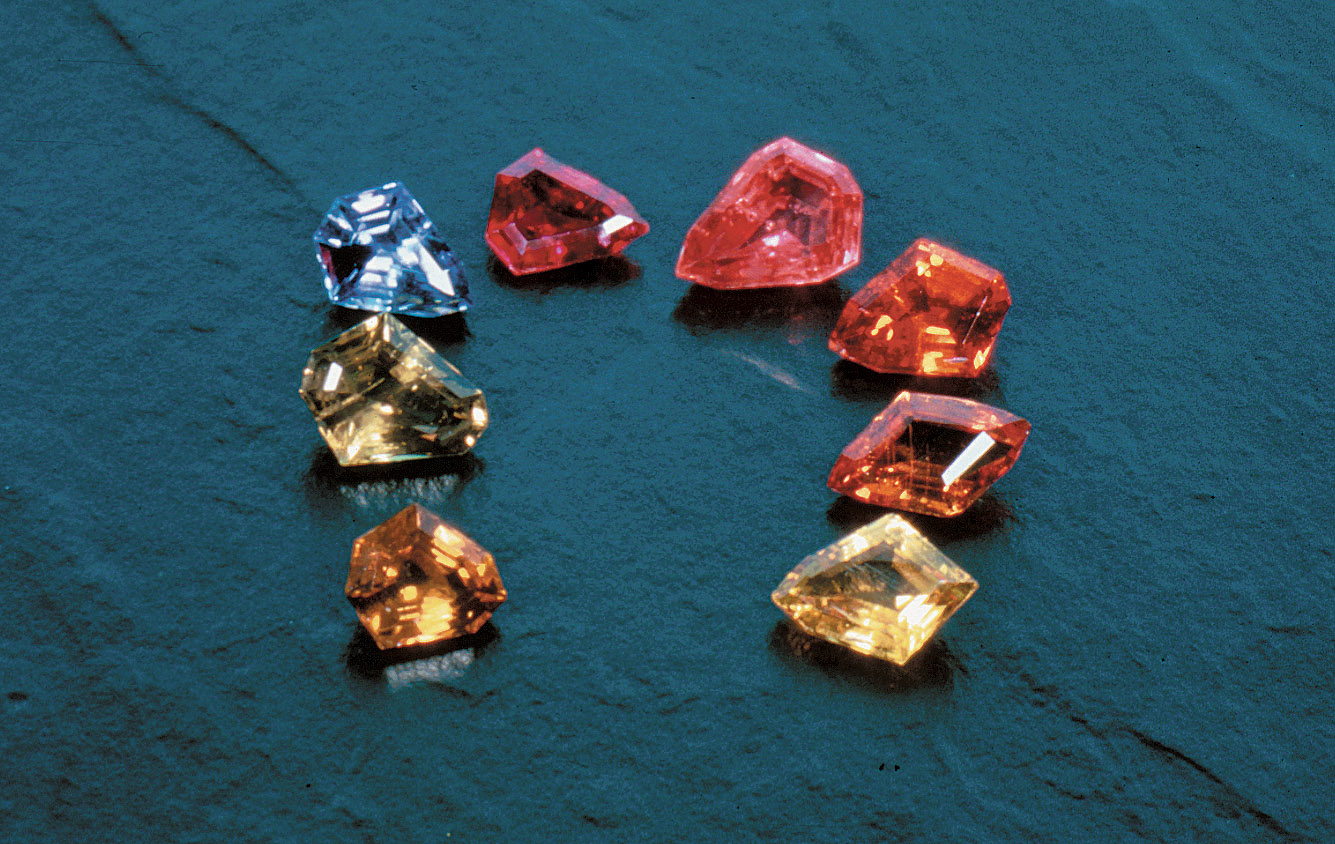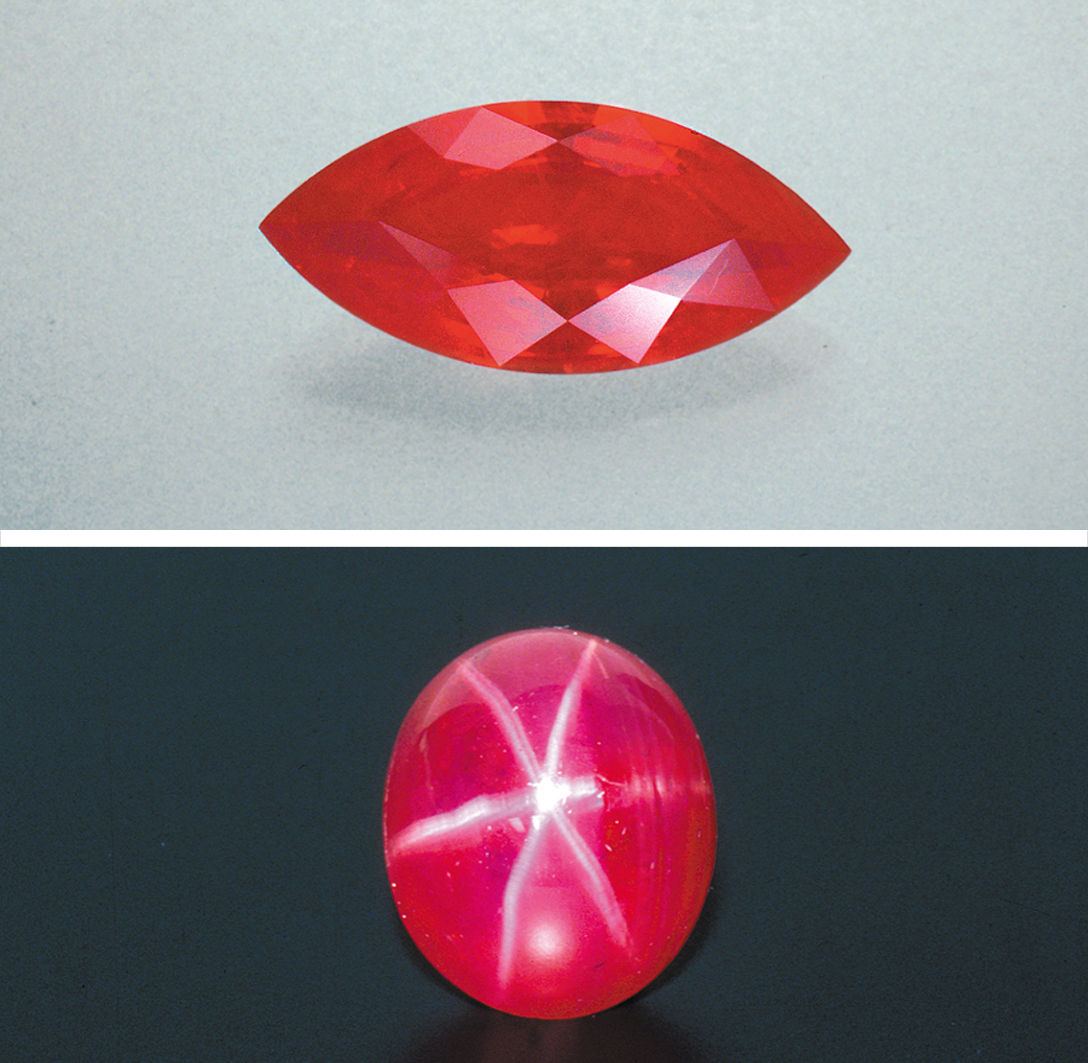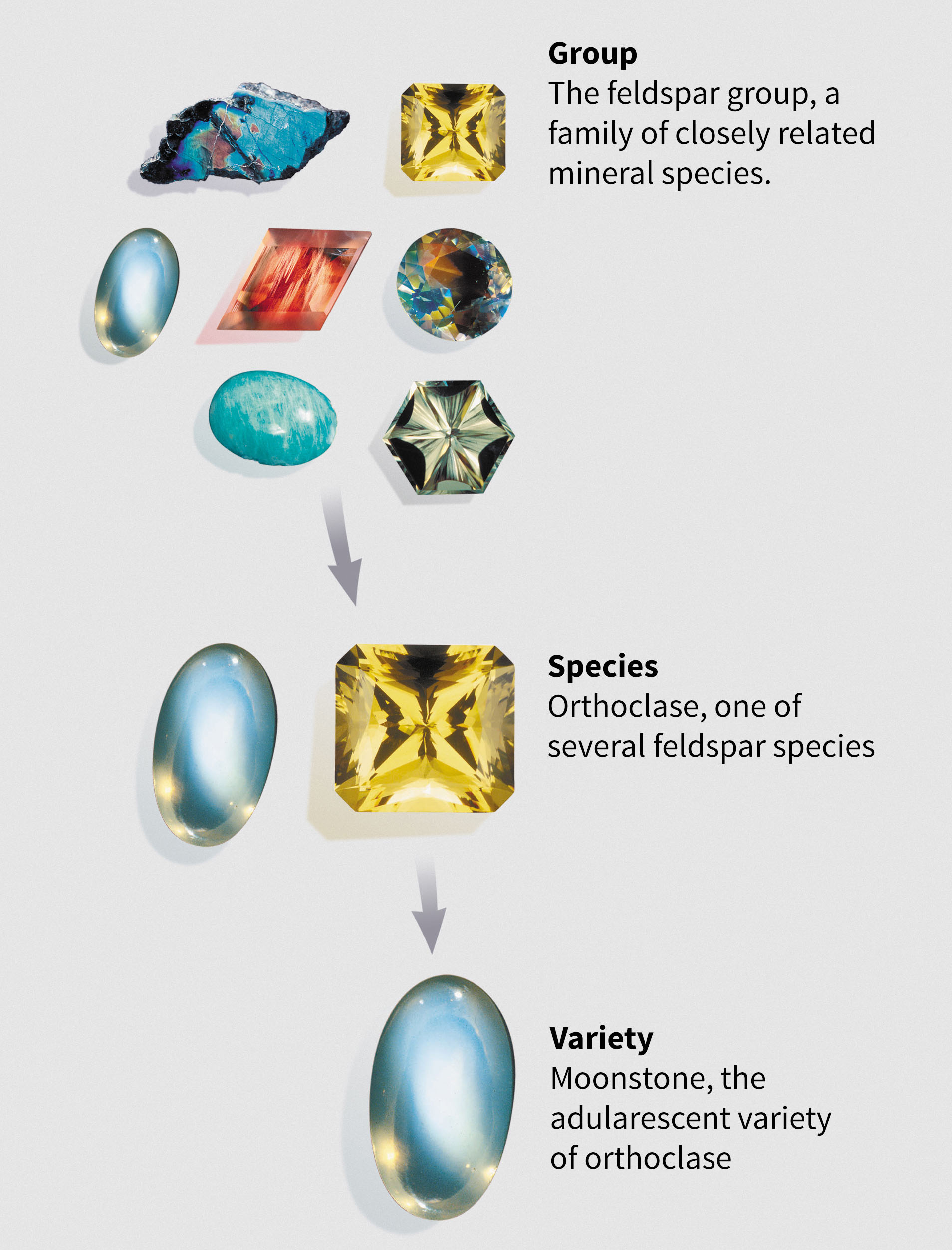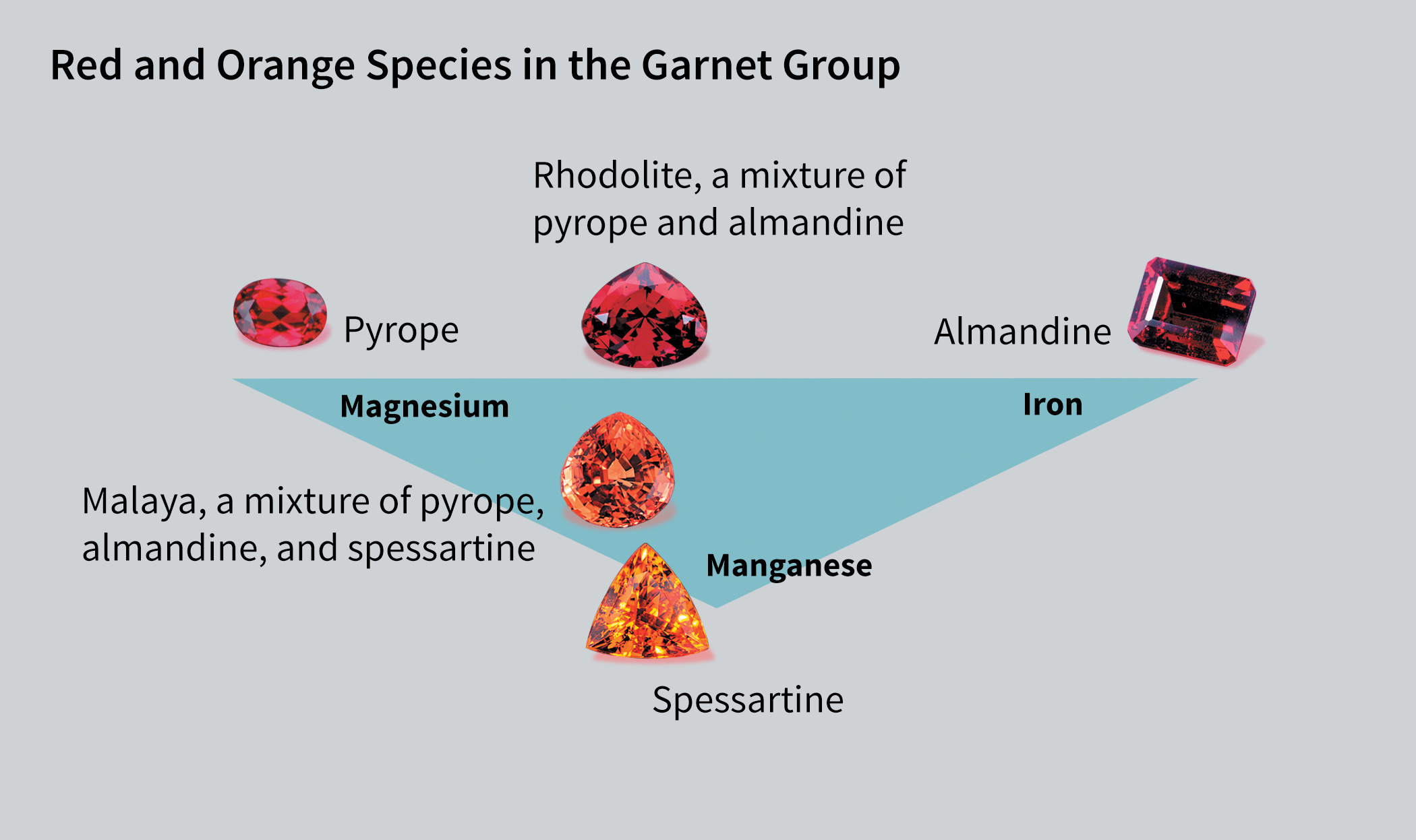Gemologists divide natural gems into broad categories, or gem species, based on chemical composition and crystal structure. Gems that belong to the same species often differ in visible characteristics like color, transparency, or phenomenon. These differences create subcategories called gem varieties. For example, ruby is the red variety of corundum, and aquamarine is the light blue variety of beryl.
Phenomena are unusual optical effects that occur in some gems, like opal’s play-of-color, or the star in star sapphire. Only a limited number of stones show phenomena, so any stone that shows a particular phenomenon can usually be a variety of only one of a few species.
In the process of gem identification, you identify each stone by its species and sometimes by its variety. Some gems, however, fall into broader mineral classifications—called groups—that consist of several closely related species. The best-known gem-mineral groups are feldspar and garnet.
The garnets used in jewelry make up a group of closely related species. All garnets have essentially the same crystal structure, but some elements in their chemical compositions are different. While the crystal structure maintains its basic framework, various chemical elements substitute for one another within that crystal structure. This is called isomorphous replacement.
Garnets in a group are often chemical mixtures of two or more species. The mixtures can be complex, so gemologists fit sequences of stones into continuous ranges of chemical composition called series. The garnet group contains several series. For example, some red garnets are mostly pyrope in composition, some are mostly almandine, and still others fall in between. This range is the pyrope-almandine series. There are also pyrope-spessartine and almandine-spessartine series.
The species term used for a particular garnet—like almandine or pyrope—tells you the dominant species or mixture of species in that stone. You’ll be able to establish this from certain combinations of gem properties. You’ll learn more about red garnets and how to separate them in Assignment 13.









